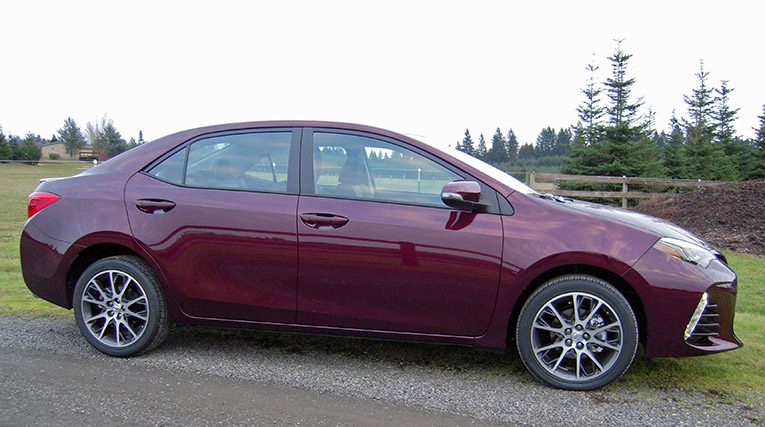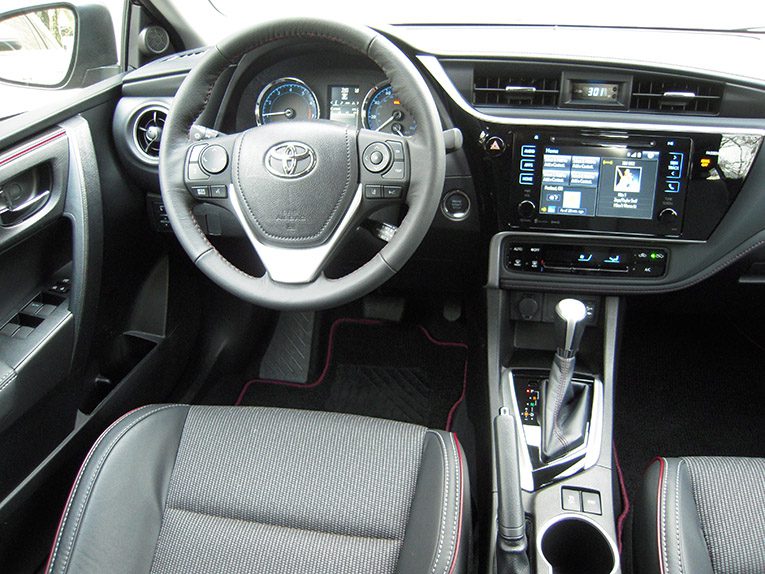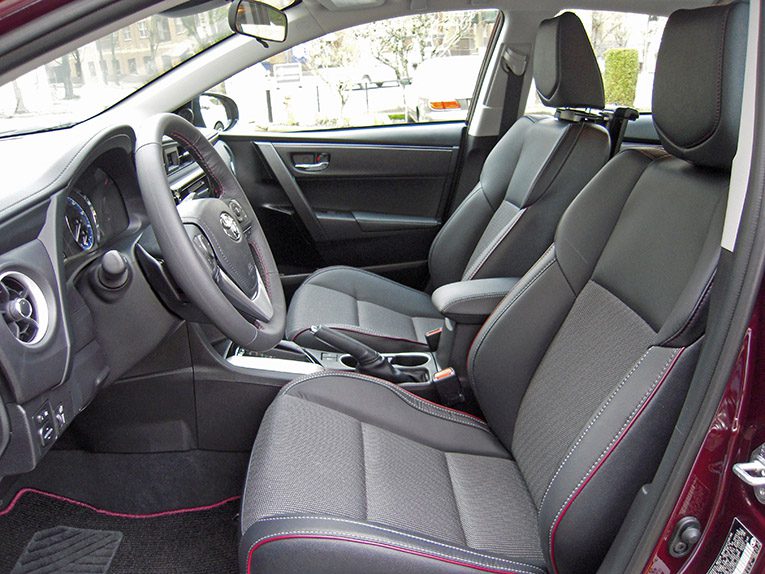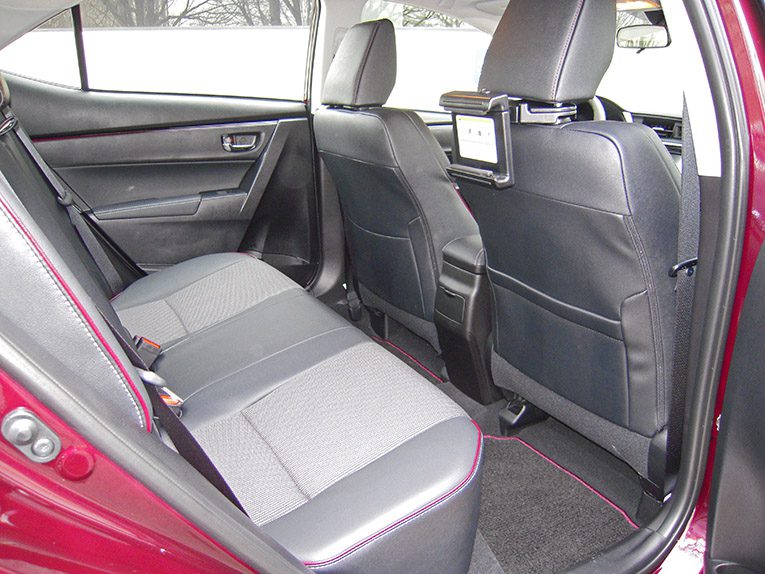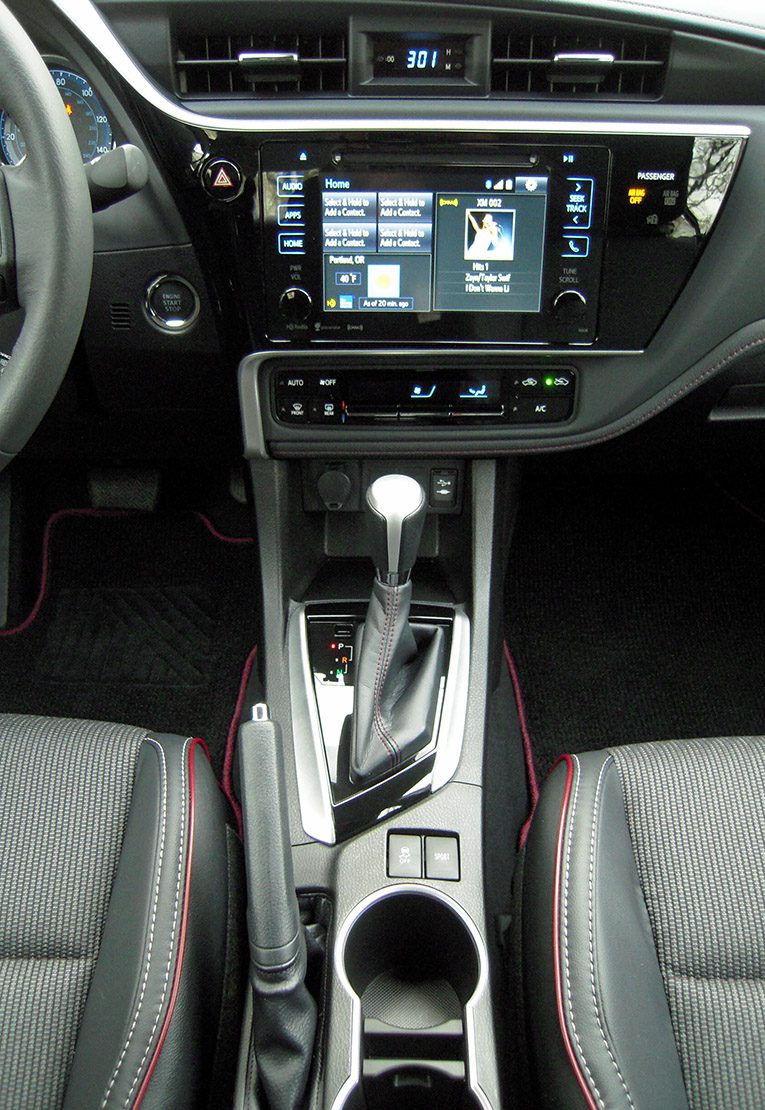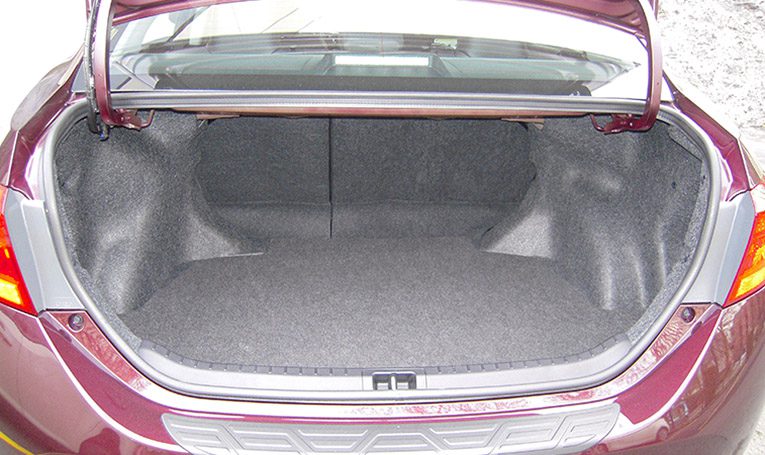It used to be that if consumers were shopping for a reliable compact car, they could choose between the Toyota Corolla and the Honda Civic. Nowadays there are a bajillion quality choices in the class. So how does the Corolla stack up?
The Corolla was first introduced in 1966 in Japan and came to the U.S. in 1968. It’s now in its 11th generation. The Corolla got a makeover in 2014 and gets refreshed for 2017.
There are several different trims to fit a variety of budgets: L, LE, Eco, SE, XLE, and XSE. Starting prices range from $18,500 to $22,680. This year there’s also a 50th Anniversary Edition which starts at $21,900 and gets several special touches such as badges, unique styling, wheels and contrasting stitching in the interior.
The front-wheel-drive Corolla is powered by a 1.8-liter four-cylinder engine that makes 132 horsepower and 128 pound-feet of torque, paired with a continuously variable transmission. A six-speed manual transmission is also available. The Eco trim gets the same engine but it delivers 140 hp.
Handling is blah. It’s fine in city traffic but if you need to hustle, the engine feels underpowered and the CVT gets loud. At least the CVT shifts smoothly. There are paddle shifters on the steering wheel but they don’t do much to improve performance. The ride quality is pretty good even over rough roads.
Fuel economy is good for the class but there are several rivals that do better. EPA mileage estimates are 28 mpg city and 35 mpg highway with a combined rating of 31 mpg. I got 30 mpg during my week with a mix of city and highway driving.
The interior is comfortable and practical with many soft-touch materials, giving it a surprisingly upscale vibe. The Corolla seats five passengers, but if you have adults in the back seat, four will be more comfortable. Passengers have good legroom in both rows of seating but taller passengers in back may not have enough headroom.
The infotainment system is user-friendly. You can use the touchscreen or buttons and knobs, which is nice when making adjustments to the climate or audio settings.
All Corollas come with several standard features including rearview camera, Bluetooth, USB port, six-speaker audio system, 6.1-inch touch-screen display, voice recognition, Siri Eyes Free and automatic high beams. Several driver safety features are also standard including adaptive cruise control, forward collision warning, automatic emergency braking, pedestrian detection, lane departure warning and lane keep assist.
Trunk space is average for the segment with 13 cubic feet. The trunk opening is wide making it easy to load large items. The rear seats split and fold.
The good:
Lots of standard safety technology for the class with Toyota’s Safety Sense.
Great reliability ratings.
Excellent crash test ratings for the class
Good legroom for passengers in both rows of seating
Easy-to-operate infotainment system with a touchscreen interface as well as buttons and knobs. Navigation is available as an option.
Toyota Entune app can be added and works well.
The not so good:
Blah driving dynamics
Engine can feel underpowered
Apple CarPlay and Android Auto not offered
Taller backseat passengers may not have enough headroom
Bottom line:
The Corolla is a good buy for the money and appeals to buyers who want a practical and reliable compact car with great safety features. That’s why more than a million Corollas are sold around the world each year. But many competitors boast better handling, better fuel efficiency and more space so you’ll want to test drive some rivals such as the Ford Focus, Honda Civic, Hyundai Elantra and Mazda3 before making your pick.



